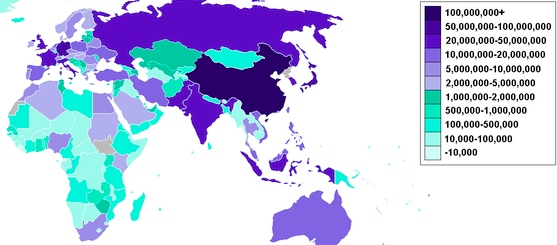With International Women’s Day this week on March 8th, several prominent aid and research organizations working in the developing world are releasing some fascinating new reports that explore how ICTs and gender impact each other. Creating a startling picture of the realities of gender disparities within an already gaping digital divide, the reports identify a technical literacy barrier that is hindering development for women at the Base of the Pyramid (BoP), or those living on less than $2 a day. It’s currently estimated that a woman is 21% less likely to own a mobile phone than a man, and of the large population of women that do not own phones, one report revealed that 22% of them claimed the main reason was that they “wouldn’t know how to use it”.
Termed the “mobile phone gender gap” by mWomen, a GSMA program which aims to reduce it by 50% by 2014, this inequality has recently been examined from several different perspectives: four case studies from India compiled by the Cherie Blair Foundation and International Center for Research on Women (ICRW); a research report that offers a narrative glimpse into the lives of BoP women, framework for designing business models and a set of research tools for conducting studies, all created by the GSMA mWomen Program; and an analysis of the results of several ICT gender focused projects conducted by the Swedish Program for ICT in Developing Regions (Spider).
1. Connectivity: How Mobile Phones, Computers, and the Internet Can Catalyze Women’s Entrepreneurship
The Cherie Blair Foundation, a charity that supports women entrepreneurs in developing and transition countries, and the International Center for Research on Women (ICRW), an organization which aims to improve gender equality and reduce poverty in the developing world, teamed up to investigate four initiatives to target women and observe how technology is helping them to earn income. Through in-depth research and analysis, the report focused on the opportunities and challenges involved to reach several important conclusions:
- Women will utilize ICTs to develop their businesses when the technology is available to them, increasing both efficiency and social status
- Out of all of the ICTs currently available, mobile phones are the first choice for successful business ventures, with portability and adaptability being the biggest draws
- Women using ICTs in their businesses promote their benefits amongst friends and family
- Out of the few thousand women highlighted in the case studies, there’s still a lot of potential — perhaps half a billion women — for new entrepreneurial ICT initiatives in India
- Partnerships are essential between the public, for-profit, non-profit and social enterprise sectors
- Sustainability is still a challenge but could be improved with more multi-sectoral partnerships bolstered by the economic and social benefits
- ICTs are attracting women entrepreneurs for their efficiency and time-saving capabilities though exploring new ways the technology can foster support and communication between women entrepreneurs still needs to be explored
2. Portraits: A Glimpse into the Lives of Base of the Pyramid Women
To provide a snapshot of what life is like for women living on under $2 a day, the GSMA mWomen Programme, a global public-private partnership between the worldwide mobile industry and the international development community including USAID and AusAID, created Portraits, a summarized version of a larger research report entitled Striving and Surviving – Exploring the Lives of Women at the Base of the Pyramid, due to be released on March 8th. To represent the mass of quantitative data and information collected from one-on-one interviews during the research, the report presents 8 fictionalized life stories from varying regions, each representing a different important aspect of life for BoP women. Here are just a few of the statistics that can be found in the report:
- Of the women who did not want to own a mobile phone, 22% said the main reason was that they “wouldn’t know how to use it”
- 74% of women chose “a good education for my children” as one of their top five life priorities
- 83% of the women surveyed had not completed secondary education. 31% had no formal education at all
- 47% of mobile owners said they had been taught to use their handset by their husbands, while 34% had taught themselves
- Only 6% of the women in the study knew (without being prompted) you could access the Internet through a mobile phone, and less than 2% had done so. Amongst young BoP women ages 16-21, 39% had some awareness of the mobile web, though only 5% had used it
3. Empowering Women Through ICT
Summarizing the outcomes and conclusions from five different projects using various ICT platforms carried out in five countries — Bolivia, Kenya, India, Rwanda, Vietnam, and Bolivia — this report created by the Swedish Program for ICT in Developing Regions (Spider) focuses on how ICTs can support women in the rural regions of the global south. By observing the impacts of the projects on the lives of each group of women, Spider researchers considered the implications of how technology affects gender just as gender affects technology through:
- 2 projects in Bolivia: one focusing on empowering female community leaders and one supporting victims of domestic violence through a safe virtual environment
- A project carried out in both Kenya and India which focused on ecological sustainability, diversification of livelihood, basic training in ICT through self-help groups
- A project in Rwanda which explored the use of ICT in small business development through a women’s basket weaving initiative
- A research project in Vietnam which considered gender in the development of ICT.






























































